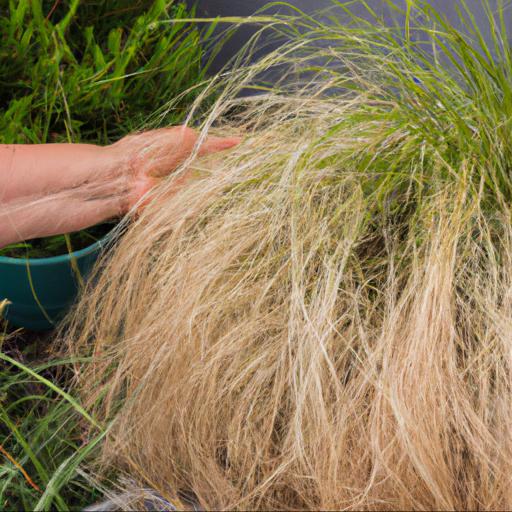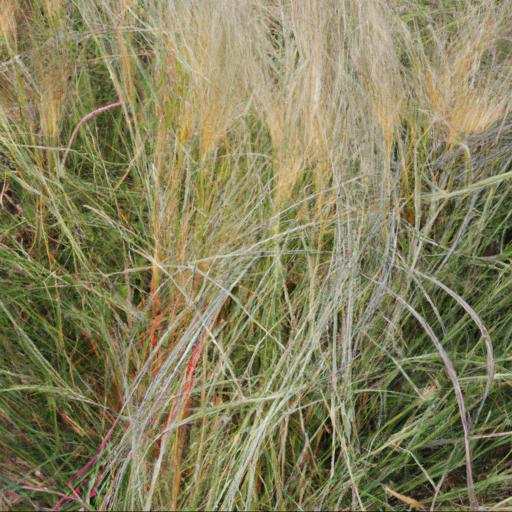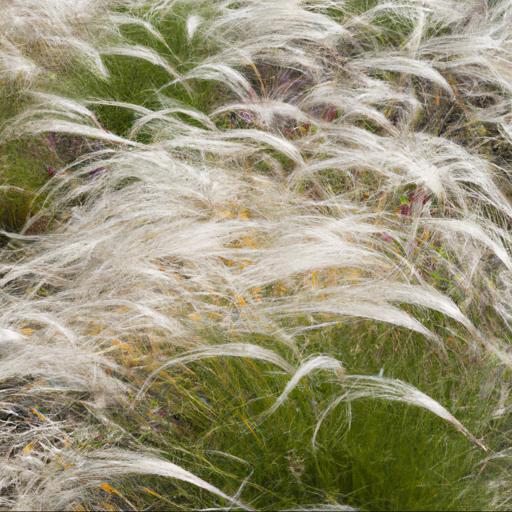Stipa tenuissima, also known as Mexican feathergrass, is a graceful, ornamental grass native to Mexico, the southwestern United States, and parts of South America. It is a low-growing, evergreen grass that is drought-tolerant and has a soft, delicate texture. This grass is an excellent choice for adding texture and movement to a garden, and it is easy to care for and maintain.
With its airy, feathery foliage, Stipa tenuissima is a popular choice for gardens, xeriscapes, and rock gardens. It is also a great choice for erosion control and can be used as a ground cover.
Benefits of growing stipa tenuissima
Stipa tenuissima is a perennial grass species known as Mexican Feather Grass. It is a fine grass, with airy, delicate seed heads that give a delightful rustling sound in the breeze. Growing Stipa tenuissima in your garden has many benefits, with its low maintenance nature, drought tolerance and ornamental value.
The main attraction of Stipa tenuissima is its light and airy appearance. It has delicate green foliage and feathery tan flowers that create a beautiful pattern in any outdoor space.
It looks great when planted en masse around a pool, decking area or anywhere that requires a bit of ornamental decoration. The bare dry seed heads of Stipa tenuissima add texture and interest to the landscape.
It is a great plant for rockery gardens and for providing splashes of colour amongst gravel or stones. Stipa tenuissima is a low maintenance plant that is relatively easy to care for. It is extremely drought tolerant, requiring minimal watering during hot summer months.
Once established it requires minimal fertiliser applications and responds well to annual pruning which will help keep its shape. It is also a great choice for gardeners who don’t enjoy weeding, as it is an incredibly resilient species that is free from serious disease and pests.
In summary, Stipa tenuissima is a versatile grass species that can be successfully grown in most gardens. It provides a range of benefits, such as its low maintenance nature, drought tolerance and ornamental value. With its airy seed heads and delicate foliage, Stipa tenuissima is sure to add a unique appeal to any outdoor space.
How to plant and care for stipa tenuissima

Planting and caring for Stipa tenuissima is an easy and rewarding task for the UK gardener. Native to many parts of Europe, this fine textured ornamental grass is the perfect addition to a garden, providing natural structure in the form of airy clumps and intricate feathery foliage.
When planting Stipa tenuissima, be sure to select a sunny position with well-draining soil. It will tolerate a range of soils from sandy to clay-based, and is drought-tolerant once established. Plant either from seed or a small starter plant, ensuring that each bunch of foliage is spaced at least 6 inches apart.
You can then lightly cover with soil and water in well. Once planted, Stipa tenuissima is relatively low maintenance, only requiring occasional weeding and watering. To ensure full growth, ensure you apply a slow release fertilizer during the growing season and trim any dead leaf tips in the late winter.
Be sure to wear gloves when doing this, as the leaves can be brittle and sharp. Stipa tenuissima is an excellent choice for a low-maintenance garden display, with its fluffy golden-green feathery foliage and tall arching stems.
It makes the perfect addition to a summer meadow, wildflower patch or rock garden. Even better, when in bloom, its delicate nodding panicles add a soft textured splash of colour.
With the right care, Stipa tenuissima will bring a timeless natural element to any garden for years to come.
Common problems with stipa tenuissima

Gardening with Stipa tenuissima, also known as Mexican feather grass, is a great way to bring an edge of modernity to any yard. But, like with any plant, there can be problems when it comes to maintaining the health of this grassy ornamental. Knowing how to address these common issues is the key to having a lush, beautiful garden of Stipa tenuissima.
One of the most common problems encountered by those who grow Stipa tenuissima is the improper moisture levels in the soil. Without the right amount of moisture, this species of grass slows down in its growth and can die off if the conditions are not remedied quickly.
Therefore, ensuring the soil is moist but not soggy is important to the health and longevity of Stipa tenuissima. Gardeners should either manually water or use a soaker hose to provide the necessary amount of moisture. Another common problem encountered when gardening with Stipa tenuissima are the effects of drought.
This type of grass does not have a naturally deep root system, so it can be damaged more easily when dealing with dry soil. Too much sun exposure, combined with not enough water, can quickly damage the grass, causing it to yellow and even disappear.
To avoid this, gardeners should keep an eye on the amount of sun their Stipa tenuissima is receiving, and should water and mulch the soil regularly. Finally, one of the most difficult problems faced by those who grow Stipa tenuissima is the amount of care and maintenance required to keep the grass looking its best.
This type of grass grows very fast, which means it must be trimmed and groomed regularly in order to prevent it from becoming too wild and uncontrollable. Trimming Stipa tenuissima should be done only with approved gardening shears and done sparingly, or it could damage the grass itself. With regular maintenance, Stipa tenuissima can thrive and provide great color to any garden.
Bottom Line
Stipa tenuissima, commonly known as Mexican feather grass, is an ornamental grass that is native to the southwestern United States and Mexico. It is a perennial grass that grows in a clump and produces thin, wispy, golden-green foliage and feathery flower heads.
Mexican feather grass is drought tolerant and requires little maintenance, making it an ideal choice for landscaping in dry climates. It is also a great choice for adding texture and movement to a garden, and can be used as a groundcover or in containers.
FAQ
What is the scientific name of Stipa tenuissima?
The scientific name of Stipa tenuissima is Stipa tenuissima Trin.
Where is Stipa tenuissima commonly found?
Stipa tenuissima is commonly found in dry, open areas of the southwestern United States, Mexico, and parts of South America.
What are the characteristics of Stipa tenuissima?
Stipa tenuissima is a perennial grass native to North America. It is a bunchgrass with fine, narrow leaves and a wispy, feathery appearance. It is drought tolerant and grows in clumps, reaching heights of up to 3 feet. It produces small, yellow flowers in the summer and its seed heads are feathery and silvery. It is a popular ornamental grass and is used in landscaping and as a windbreak.
How does Stipa tenuissima reproduce?
Stipa tenuissima reproduces by producing seeds that are dispersed by wind.
What are the benefits of planting Stipa tenuissima?
The benefits of planting Stipa tenuissima include providing a low-maintenance, drought-tolerant grass that is attractive and can be used as a ground cover, erosion control, and habitat for beneficial insects. It also provides a great source of food for birds and other wildlife.
How can Stipa tenuissima be used in landscaping?
Stipa tenuissima can be used in landscaping to create a natural, textured look. It is a low-maintenance, drought-tolerant grass that can be used as a groundcover or as a border around flower beds and pathways. It can also be used to create a focal point in a garden or to add height and texture to a garden bed.

